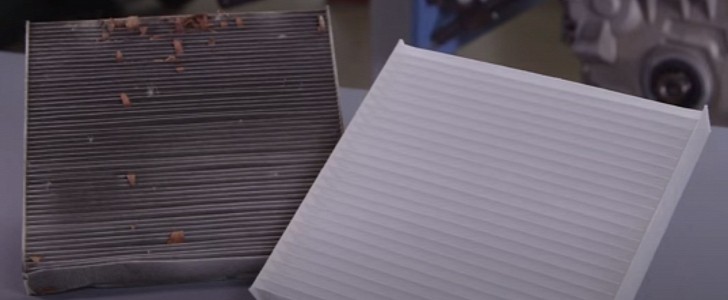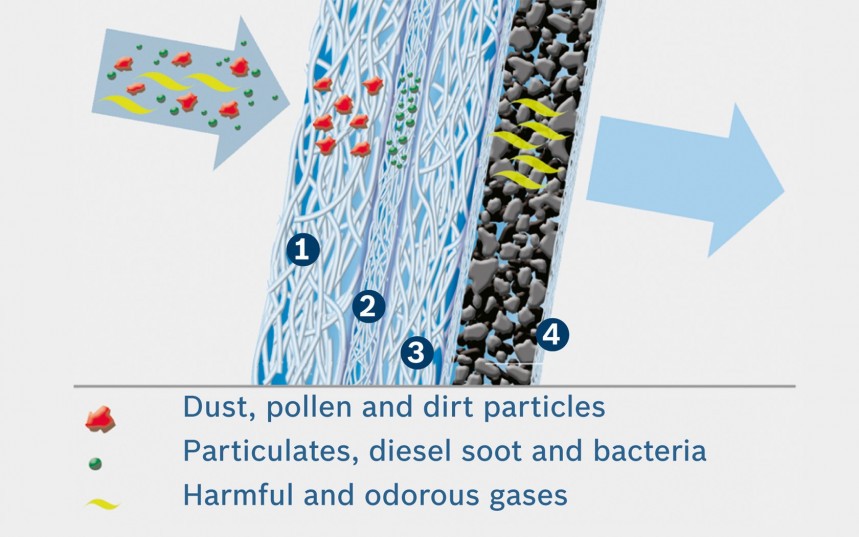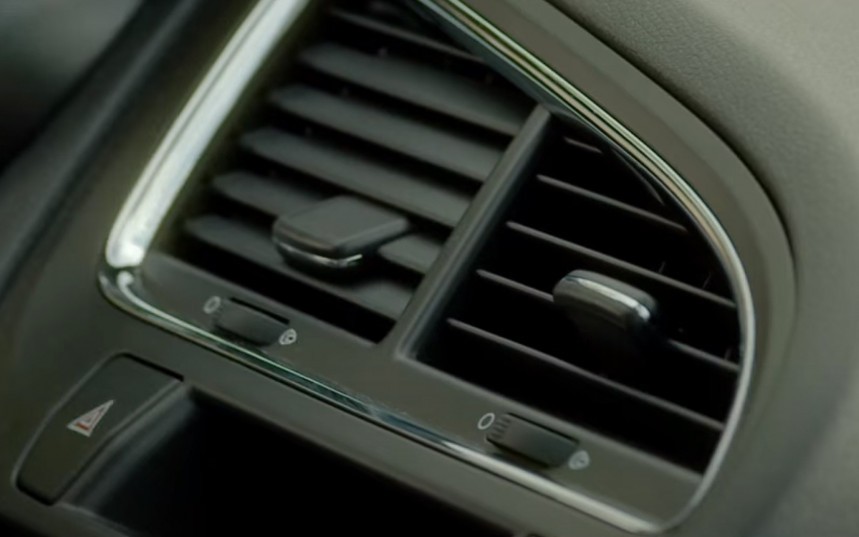This filter is an important part of the vehicle’s ventilation system. It helps remove dangerous pollutants like dust smug, mold spores and pollen from the air that enters the cockpit.
It also reduces the load on the blower, protects the system from contamination, improves air circulation, and prevents the fogging of the windows. Also, the inside of the windows and fittings stay cleaner for longer.
These filters were first introduced on high-end luxury cars in the late 1970s, and as manufacturers realized how efficient they were in cleaning the air that passages breathe, they gradually started to introduce this feature on more cars.
In current times, almost all vehicles have at least one air cabin filter. The edged unit is often made from an engineered material or paper-based, multifiber cotton.
Although there are some filters that can be reused, like K&N’s cleanable version, most of them have a limited lifespan and need to be replaced regularly. That's beause, for example, during one hour of driving, up to 2,642 gallons (100,000 liters) of air are circulated through the vehicle’s interior, according to research by supplier Mahle.
In case you are suffering from health conditions that affect your respiratory system like allergies or asthma, the purity of the air you breathe inside the vehicle is extremely important. If the cabin air filter is worn out or is clogged, the pollutant concentration in the vehicle can increase up to six times compared to the outside air.
That is why it is especially important to follow the manufacturer’s guidelines and change this filter in the recommended intervals.
These vary depending on the type of vehicle and the filters used, but the recommended interval is somewhere between 10,000 and 15,000 miles (15,000 - 24,000 km) or at least once a year.
The environment where you live and drive is also a key factor. If you use the vehicle in a congested, urban environment or places with poor air quality, you might need to replace the filter more often. The same applies if you are in a dusty environment as the filter might easily get clogged by dust faster than usual.
There are multiple signs that it needs replacing and here is what you should look for. The most widespread problem that arises is an unpleasant, moldy odor when the ventilation system is turned on. Dust and pollen that build up on the surface of the filter can begin to grow mold, fungi, and other bacteria, especially in humid environments.
Other signs include a weak or reduced airflow even if the air conditioning or heat are set to the highest setting, or a whistling noise coming from one or multiple air intake ducts.
To change the filter, we recommend going to a repair shop or a dealership to make sure it is done right. In most cars they are placed in the glovebox or behind the dashboard so, theoretically it should be easy to access it by yourself.
Others though require certain parts, like the gas pedal to be taken off and you might regret taking on the task. It is also important to check if your car is still covered by the factory warranty as changing the filter by yourself, or using a cheap one, could void the warranty.
There are many filter manufacturers and a few different types of filters, so if you choose to at least buy it yourself look for premium brands like Mahle, Mann, Denso Bosch, or the original equipment used by your car’s manufacturer.
We also recommend that you look for a carbon-activated filter that effectively removes harmful exhaust fumes, dirt, and dust as well as high ozone concentrations and unpleasant smells.
These filters were first introduced on high-end luxury cars in the late 1970s, and as manufacturers realized how efficient they were in cleaning the air that passages breathe, they gradually started to introduce this feature on more cars.
In current times, almost all vehicles have at least one air cabin filter. The edged unit is often made from an engineered material or paper-based, multifiber cotton.
In case you are suffering from health conditions that affect your respiratory system like allergies or asthma, the purity of the air you breathe inside the vehicle is extremely important. If the cabin air filter is worn out or is clogged, the pollutant concentration in the vehicle can increase up to six times compared to the outside air.
That is why it is especially important to follow the manufacturer’s guidelines and change this filter in the recommended intervals.
These vary depending on the type of vehicle and the filters used, but the recommended interval is somewhere between 10,000 and 15,000 miles (15,000 - 24,000 km) or at least once a year.
The environment where you live and drive is also a key factor. If you use the vehicle in a congested, urban environment or places with poor air quality, you might need to replace the filter more often. The same applies if you are in a dusty environment as the filter might easily get clogged by dust faster than usual.
There are multiple signs that it needs replacing and here is what you should look for. The most widespread problem that arises is an unpleasant, moldy odor when the ventilation system is turned on. Dust and pollen that build up on the surface of the filter can begin to grow mold, fungi, and other bacteria, especially in humid environments.
Other signs include a weak or reduced airflow even if the air conditioning or heat are set to the highest setting, or a whistling noise coming from one or multiple air intake ducts.
Others though require certain parts, like the gas pedal to be taken off and you might regret taking on the task. It is also important to check if your car is still covered by the factory warranty as changing the filter by yourself, or using a cheap one, could void the warranty.
There are many filter manufacturers and a few different types of filters, so if you choose to at least buy it yourself look for premium brands like Mahle, Mann, Denso Bosch, or the original equipment used by your car’s manufacturer.
We also recommend that you look for a carbon-activated filter that effectively removes harmful exhaust fumes, dirt, and dust as well as high ozone concentrations and unpleasant smells.










